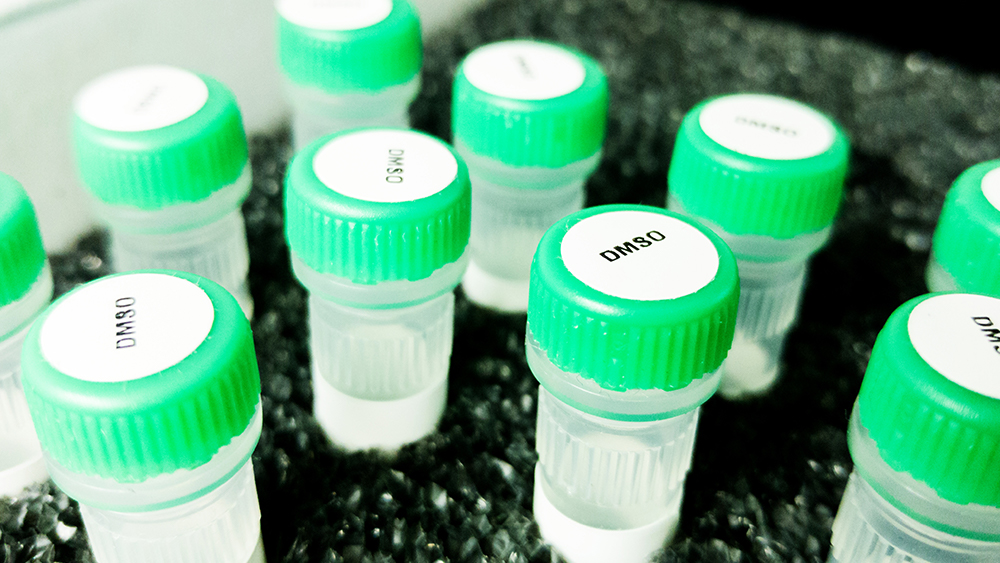DMSO: A common lab chemical with ANTICANCER potential
04/26/2025 / By Olivia Cook

- Dimethyl sulfoxide or DMSO is a versatile chemical used for decades in laboratories and medicine, known for delivering drugs, freezing cells and easing pain.
- A 2020 study shows DMSO can stop cancer cells from growing and even trigger their death through apoptosis (programmed cell death).
- DMSO slows cancer cell growth even at low doses, disrupts the cell cycle by lowering key proteins (CDK2, cyclin A), activates caspase 3 (the “executioner enzyme” in cell death), causes DNA fragmentation and cell shrinkage (hallmarks of apoptosis) and targets extrinsic apoptosis (a death signal from outside the cell).
- DMSO, once thought to be biologically neutral, may hold real anticancer potential. It could one day improve cancer treatments – or become one itself.
- More studies are needed in animals and humans but this finding shows that even familiar substances can still surprise us – and many hold hidden promise for fighting disease – like cancer.
For decades, dimethyl sulfoxide – better known as DMSO – has quietly played a behind-the-scenes role in science. A colorless liquid with the power to dissolve both water-loving and oil-loving substances, it’s been a lab staple, used to deliver drugs, freeze living cells and soothe pain. But new research suggests this chemical reagent may have an unexpected application: a cancer-fighting agent.
A 2020 study published in the Journal of Medical Discovery reveals that DMSO isn’t just a lab chemical – it can actually stop cancer cells from growing and may trigger their self-destruction.
DMSO is a molecule with a unique personality. One end likes water, the other prefers oil. This dual nature makes it a powerful solvent, capable of transporting substances across cell membranes – a reason it is often used to deliver medications and preserve cells at ultra-cold temperatures. At low concentrations (below 10 percent), it is considered safe and non-toxic in lab settings.
But recent findings suggest DMSO is not exactly harmless to cancer cells. In fact, it could be their worst nightmare.
What happens when cancer cells meet DMSO?
Researchers tested DMSO on four types of human cancer cells: two leukemia cell lines (MV4-11 and TF-1a) that float freely in blood-like environments and two types of solid tumor cells – liver (Hep-G2) and breast (MCF7) – that grow in layers. Each of these cell types represent different stages of cancer cell development.
The results? DMSO stopped these cells in their tracks.
- Growth inhibition: The researchers used an XTT assay to measure cell proliferation and found that even at low concentrations, DMSO inhibited cell growth, with the effect becoming more pronounced at higher concentrations. For instance, at a 10 percent concentration, DMSO reduced the growth of liver can cells (Hep-G2) by 69 percent, leukemia cells (MV4-11) by 58 percent and breast cancer cells (MCF7) by 48 percent.
- Cell damage under the microscope: Researchers observed clear signs of stress, cell shrinkage, blebbing (small surface bulges) and fragmented nuclei (the cell’s control center). These are textbook signs of apoptosis, the body’s natural process for cleaning out unhealthy cells.
- DNA fragmentation: DMSO-treated cells showed a classic “DNA ladder” pattern, meaning their DNA was being chopped into small pieces – a key marker of programmed cell death.
- Cell death: Further microscopic analysis confirmed that DMSO didn’t just slow cancer cell growth and cause cell stress and damage – it pushed them toward apoptosis, a form of clean, controlled cell suicide.
- Caspase 3 activation: The researchers discovered that DMSO activated caspase 6, an enzyme often called the “executioner enzyme” in apoptosis. It cuts apart vital proteins inside the cell, ensuring a clean and controlled shut down. Notably, DMSO didn’t activate caspase 9, which would suggest a different, intrinsic cell death path. Instead, DMSO appears to activate the extrinsic apoptosis pathway – one that starts outside the cell.
DMSO also interfered with the cell cycle, the biological clock that governs how cells grow and divide. Every healthy cell has a schedule for when to grow, copy its DNA and divide. This process is controlled by molecules called cyclins and enzymes known as CDKs (cyclin-dependent kinases). Among the most important is CDK2, which helps cells move through critical checkpoints.
In this study, DMSO reduced the levels of CDK2 and one of its partners, cyclin A. With these key molecules disrupted, cancer cells could not continue dividing. The brakes were on and death soon followed.
DMSO’s potential as an anticancer agent
This research matters for two reasons. First, it challenges the assumption that DMSO is biologically “neutral” in lab studies. In fact, its presence could influence results, especially in cancer research. Second – and perhaps more exciting – it opens the door for exploring DMSO as a potential anticancer agent.
Could this everyday lab solvent be repurposed as part of a new cancer therapy? Could it boost the effects of other drugs or selectively target certain types of tumors? The answers are far from certain but the possibilities are tantalizing.
A word of caution – this study was done in petri dishes, not in people. Meaning, more research is needed to understand how DMSO works in the human body, how it could be safely used in treatment and whether its effects vary between healthy and cancerous tissues.
DMSO may be best known as a laboratory helper or pain-relief cream ingredient, but this new study adds a bold chapter to its story. In the right conditions, it doesn’t just dissolve chemicals – it dissolves cancer’s ability to grow, divide and survive.
Sometimes, the answers to tomorrow’s tougher health problems are hiding in plain sight today.
Learn more about DMSO or dimethyl sulfoxide by watching the video below.
This video is from the Daily Videos channel on Brighteon.com.
More related stories:
The miraculous healing power of DMSO: Nature’s forgotten cure for cancer, pain and regeneration.
“Cancer decoded” on BrightU: How chlorine dioxide is revolutionizing cancer treatments.
9 Natural treatments for patients with breast cancer.
Sources include:
Submit a correction >>
Tagged Under:
alternative medicine, anticancer, apoptosis, breakthrough, caspase 3, CDK2, cyclin A, cytotoxicity, dimethyl sulfoxide, discoveries, DMSO, health science, oncology, real investigations, research
This article may contain statements that reflect the opinion of the author
RECENT NEWS & ARTICLES
COPYRIGHT © 2018 BREAKTHROUGH.NEWS
All content posted on this site is protected under Free Speech. Breakthrough.news is not responsible for content written by contributing authors. The information on this site is provided for educational and entertainment purposes only. It is not intended as a substitute for professional advice of any kind. Breakthrough.news assumes no responsibility for the use or misuse of this material. All trademarks, registered trademarks and service marks mentioned on this site are the property of their respective owners.




















